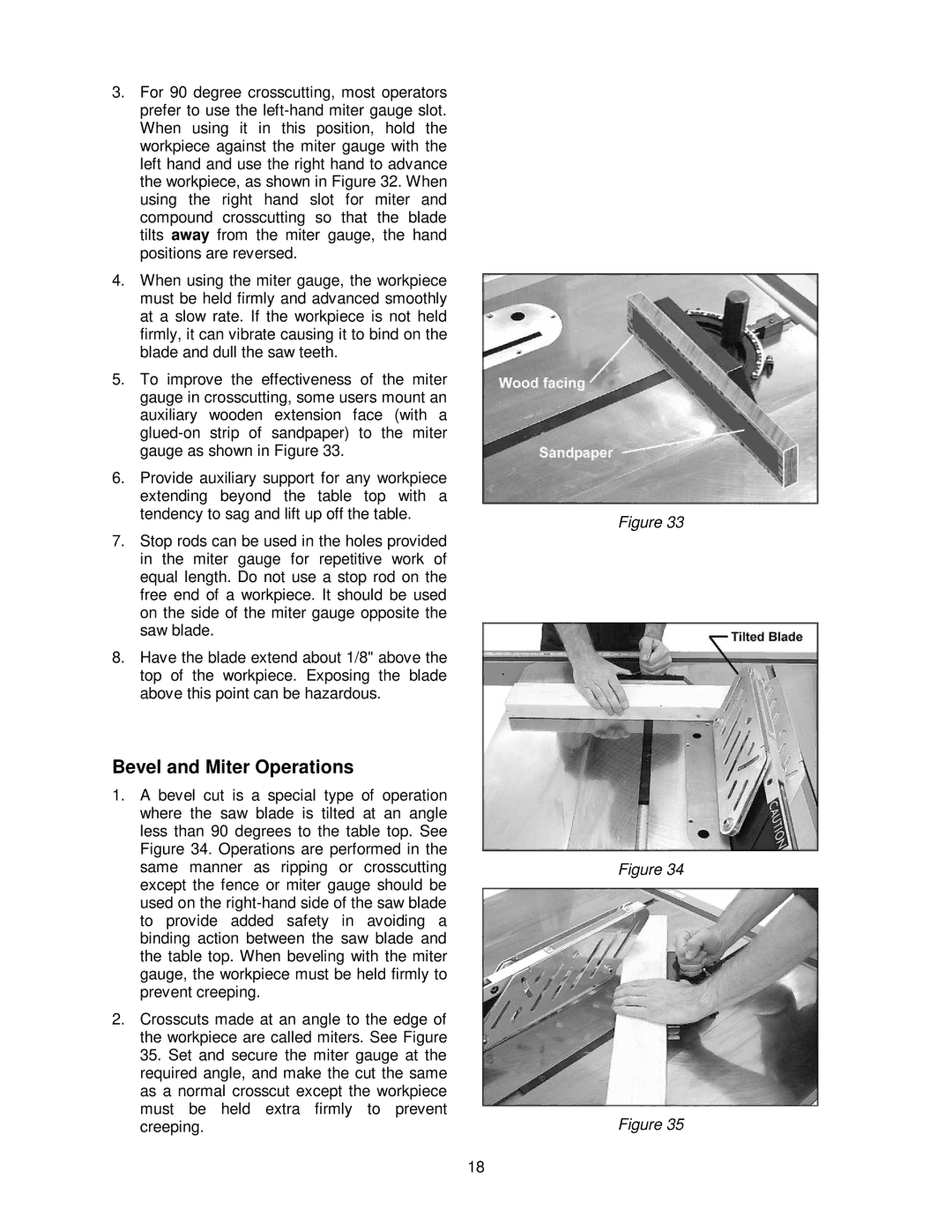66 specifications
The Powermatic 66 is an iconic table saw that has earned a reputation for excellence among woodworkers and professionals alike. Introduced in the mid-20th century, this machine combines finely crafted engineering with user-friendly features, making it a staple in many workshops.One of the standout features of the Powermatic 66 is its robust 3-horsepower motor. This powerful motor not only ensures efficient cutting but also provides the necessary torque for handling dense hardwoods and other tough materials. The motor is paired with a precision-ground cast-iron tabletop, which measures a generous 27 inches by 40 inches, providing ample workspace for larger projects while delivering stability and reducing vibration during operation.
The saw's design incorporates a unique cabinet-style base that offers exceptional durability and strength. The all-steel construction enhances rigidity, which aids in achieving precise cuts. Additionally, the heavy-duty base includes storage for accessories and blades, catering to the needs of woodworkers who value organization and convenience.
Another key feature of the Powermatic 66 is its advanced fence system, the Biesemeyer-style fence. Known for its accuracy, this fence glides smoothly along the rails and can be easily adjusted to different widths. It locks securely in place, allowing for repeatable cuts and maximum efficiency. The measuring scale is clearly marked, further enhancing usability.
The saw also boasts a 10-inch blade, capable of cutting through a variety of material thicknesses. The Blade Enclosure System allows for easier access when changing blades and minimizes dust buildup, which is critical for maintaining a clean work environment.
Safety is prioritized with features that include an anti-kickback pawl system and a blade guard, ensuring a reduced risk of accidents during operation. The Powermatic 66’s ingenuity extends to its dust collection capabilities, with an integrated port designed to work efficiently with shop vacuums, helping maintain cleanliness in the workspace.
In summary, the Powermatic 66 exemplifies the combination of power, precision, and safety, making it an indispensable tool for woodworkers. With its heavy-duty construction, innovative technology, and user-friendly features, the Powermatic 66 stands as a hallmark of quality in the woodworking industry. This saw is not just a machine; it’s a reliable partner for those who are serious about their craft.

